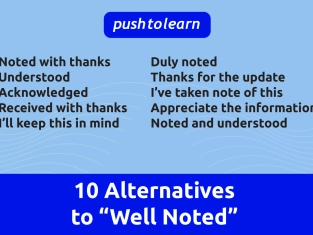by PushtoLearn
Past simple vs Past continuous
What Is the Past Simple?
The past simple tense describes actions that were completed at a specific time in the past. It is often used with time expressions such as "yesterday," "last week," "in 2010," etc.
Examples:
I visited my grandparents last weekend.
She watched a movie yesterday.
They played soccer after school.
Forming the Past Simple:
Regular verbs: Add “-ed” to the base form of the verb.
Example: “play” becomes “played”
Example: “work” becomes “worked”
Irregular verbs: These do not follow a consistent pattern and must be memorized.
Example: “go” becomes “went”
Example: “have” becomes “had”
What Is the Past Continuous?
The past continuous tense describes actions that were in progress at a specific time in the past. It often sets the scene for another action or provides background information.
Examples:
I was visiting my grandparents when you called.
She was watching a movie at 7 PM last night.
They were playing soccer when it started to rain.
Forming the Past Continuous:
Use the past tense of the verb “to be” (was/were) + the base form of the verb + “-ing”.
Example: “I was eating,” “They were playing”
Example: “She was reading,” “We were studying”
Rules for Using Past Simple and Past Continuous
-
Past Simple is used for actions that started and finished in the past.
Example: I finished my homework.
-
Past Continuous is used for actions that were ongoing at a specific time in the past.
Example: I was finishing my homework when the phone rang.
-
When combining the past simple and the past continuous in a sentence, the past continuous sets the scene, and the past simple describes the action that occurred.
Example: I was reading a book when the lights went out.
-
Specific time expressions with past continuous:
Correct: I was watching TV at 8 PM.
Incorrect: I watched TV at 8 PM.
-
Interrupted actions: Use past continuous for the ongoing action and past simple for the interrupting action.
Example: He was walking to work when it started to rain.
Common Errors
-
Using past simple instead of past continuous:
Incorrect: I watched TV when he arrived. (Should be "I was watching TV when he arrived.")
Incorrect: They played soccer at 6 PM yesterday. (Should be "They were playing soccer at 6 PM yesterday.")
-
Using past continuous instead of past simple:
Incorrect: I was eating dinner at 8 PM last night. (If the action is considered complete, use past simple: "I ate dinner at 8 PM last night.")
Incorrect: She was reading the book in one hour. (Should be "She read the book in one hour.")
-
Mixing up the order of actions: Confusing which action sets the scene and which interrupts.
Incorrect: When the phone rang, I was answering it. (Should be "I was answering the phone when it rang.")
Everyday Use
Understanding how to use the past simple and past continuous tenses correctly can help you describe past events and actions more accurately. Here are some examples of everyday conversations:
Conversation 1:
Person A: "What did you do yesterday?"
Person B: "I visited my friend and we watched a movie."
Conversation 2:
Person A: "What were you doing at 8 PM?"
Person B: "I was having dinner with my family."
Conversation 3:
Person A: "Were you busy when I called?"
Person B: "Yes, I was studying for my exam."
Conversation 4:
Person A: "Did you see the news last night?"
Person B: "No, I was cooking dinner at that time."
Conversation 5:
Person A: "What happened while you were traveling?"
Person B: "I lost my passport."
FAQ
Can I use both tenses in one sentence?
Yes, you can use both tenses in one sentence to show that one action was ongoing when another action happened.
Example: "I was reading when the phone rang."
What time expressions are commonly used with the past simple?
Common time expressions for the past simple include "yesterday," "last night," "in 2010," "two days ago," etc.
Example: "She finished her project last week."
What time expressions are commonly used with the past continuous?
Common time expressions for the past continuous include "at 7 PM," "when," "while," "all night," etc.
Example: "He was studying at 7 PM."
How do you form the past simple tense?
For regular verbs, add "-ed" to the base form of the verb. For irregular verbs, the past form is different and must be memorized.
Regular: "talk" becomes "talked"
Irregular: "go" becomes "went"
How do you form the past continuous tense?
Use the past tense of "to be" (was/were) + the base form of the verb + "-ing."
Example: "I was eating," "They were playing"

